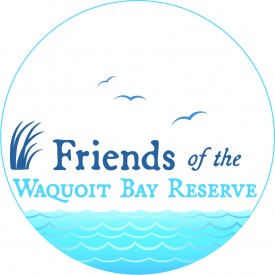Overview of Coastal Blue Carbon
Fact Sheets
Fact Sheet – Climate Benefits from Salt Marshes: Opportunities for Methane Reductions via Restoration of Tidal Flows
Fact Sheet – Using the Carbon Market to Provide Financial Support for Coastal Restoration & Protection
Fact Sheet – Greenhouse Gas Fluxes and Carbon Storage in Wetlands: Summary of BWM Science Findings
Fact Sheet – A User-friendly Model for Predicting Greenhouse Gas Fluxes and Carbon Storage in Tidal Wetlands
Fact Sheet – Policy and Management Applications of Blue Carbon
Fact Sheet – Blue is the New Green: Carbon Storage in Coastal Wetlands
Fact Sheet – Blue is the new green! Learn more about the basics of blue carbon with the Blue Carbon Fact Sheet.
Additional Resources
Coastal Blue Carbon What We’ve Learned
Valuing Salt Marshes: What We Learned at the Salt Marsh Symposium
The Methodology for Tidal Wetland and Seagrass Restoration
Bringing Wetlands to Market Project Overview Video
Learn about this project in the first in a series video on Bringing Wetlands to Market: Nitrogen and Coastal Blue Carbon
Collaboration Video
Learn how this project is leveraging collaboration to ensure that the science is useful to coastal decision-makers.
Tools Video
Learn more about the tools that we are developing through the Bringing Wetlands to Market project.
Presentations
Valuing Salt Marshes: What We Learned at the Salt Marsh Symposium
On January 24, 2013 the Waquoit Bay National Estuarine Research Reserve hosted a one-day Symposium on Valuing Salt Marshes: Carbon/Nitrogen Cycling and Ecosystem Valuation of Tidal Wetlands in the Northeast.

The Symposium, which was funded by the National Estuarine Research Reserve Science Collaborative, featured twelve talks by scientists doing related research in the Northeast focused on understanding the different values of salt marshes. These values include biochemical and geophysical values and economic values. The Symposium included presentations on Science Collaborative funded projects at the Waquoit Bay Reserve (Cape Cod, MA) and at the Wells Reserve (Wells, ME) along with presentations by scientists focused on assigning and communicating the economic value of tidal wetlands and scientists focused on understanding the biogeochemical and even microbial values of salt marshes.
What we learned was that increased collaboration between physical and social scientists working on valuing the ecosystem services of salt marshes is needed in an environment where funders want to maximize the impact of funded-research in an increasingly resource constrained environment.
PRESENTATIONS
The day’s Symposium was organized around two NSC-funded projects – the Bringing Wetlands to Market project at WBNERR and the Choices and Tradeoffs: Quantifying the Economic Value of Natural Resources and Services project at the Wells Reserve in Maine. Each of these projects explores different ways to “value” salt marsh ecosystems, and speakers shared related research on valuing salt marsh ecosystems with an emphasis on carbon and nitrogen (C/N) cycling in salt marshes and economic valuation of ecosystem services.
The following presentations share information about cutting edge research happening in the Northeast related to understanding the different values of salt marshes.
- Valuing Salt Marshes: The Importance of Linking Physical and Social Science Research
- Choices and Tradeoffs: Quantifying the Economic Value of Natural Resources and Services
- Combining Economic and Ecological Indicators to Prioritize Salt Marsh Restoration Actions
- Coastal Eutrophication as a Driver of Salt Marsh Loss
- Understanding and Measuring Accretion Processes in Tidal Salt Marshes
- Bringing Wetlands to Market – Nitrogen and Coastal Blue Carbon
- Responses of Microbial Communities to Increases in Nitrogen Loads in Salt Marshes
- Greenhouse Gas Fluxes in Tidally Restricted and Restored Salt Marshes
- Valuing New Hampshire Salt Marshes: An Approach to Measuring Ecosystem Services



